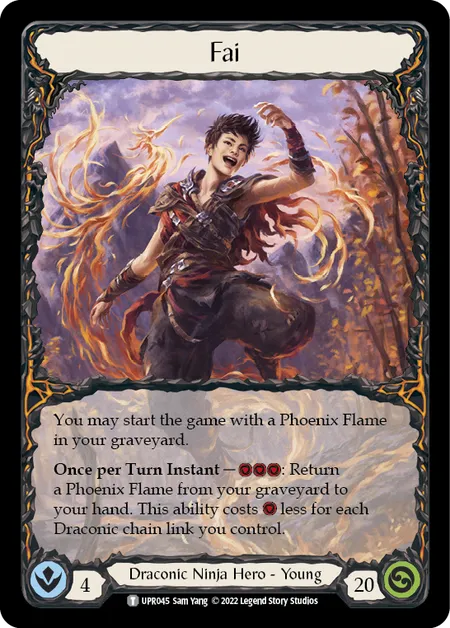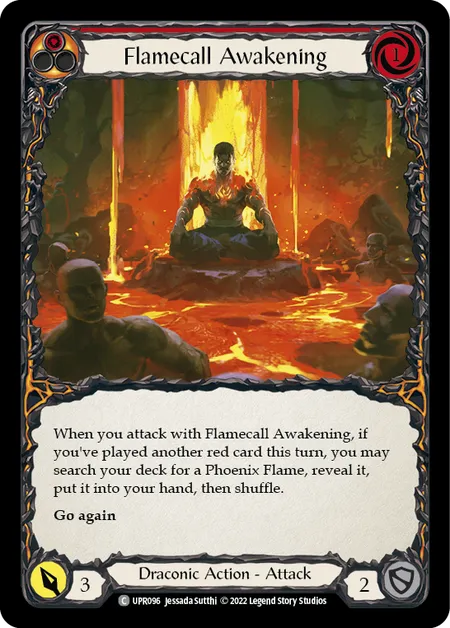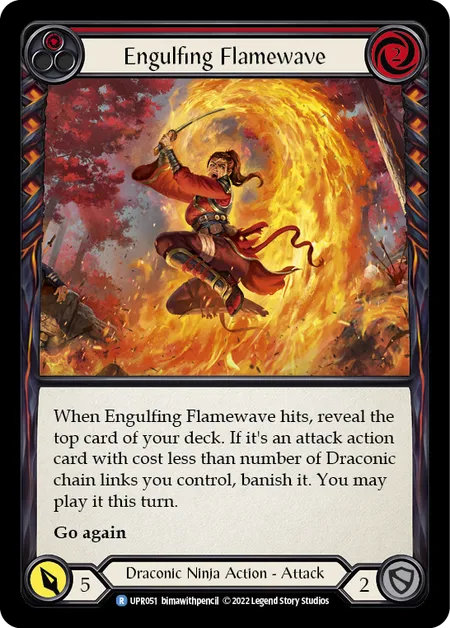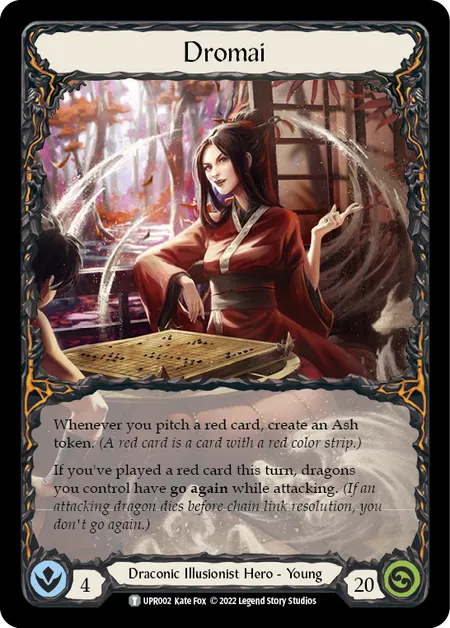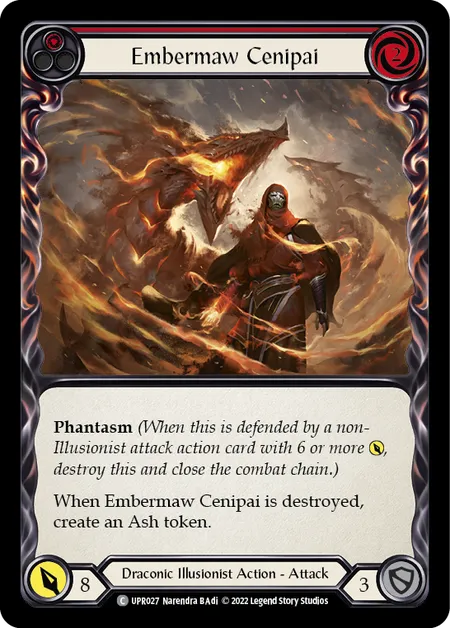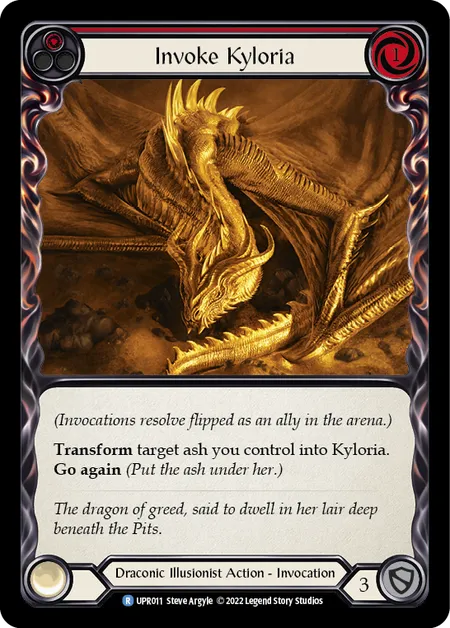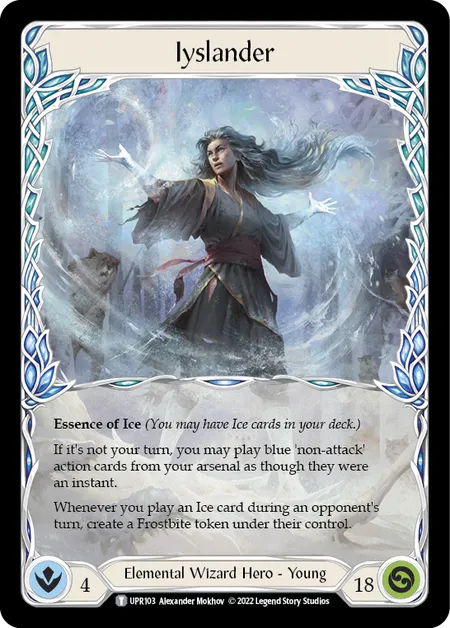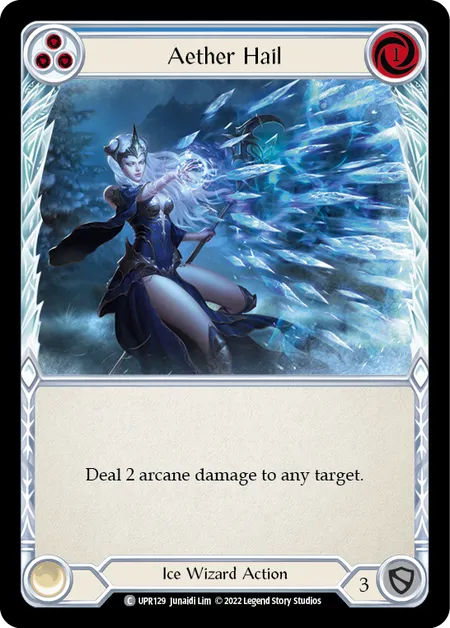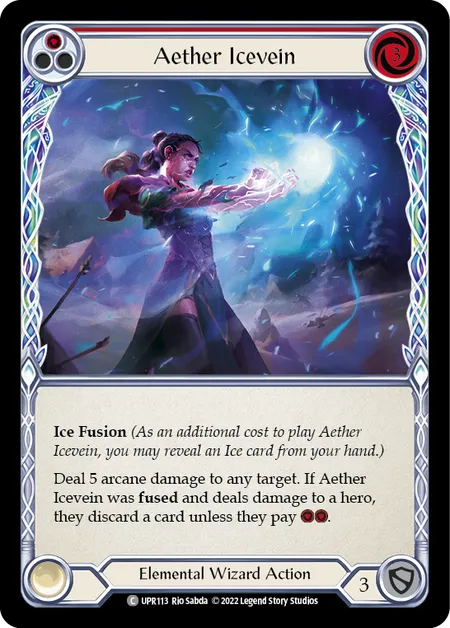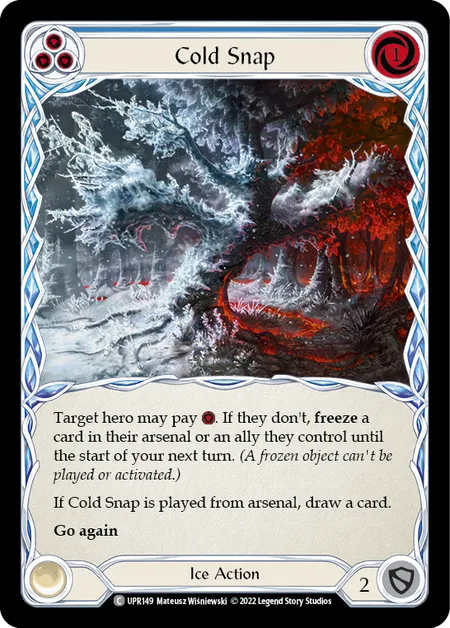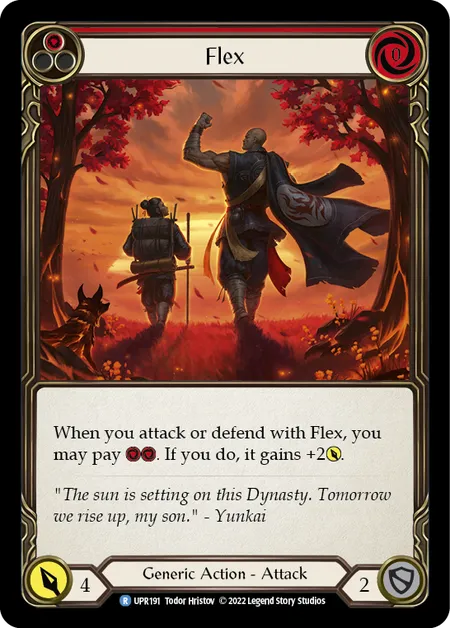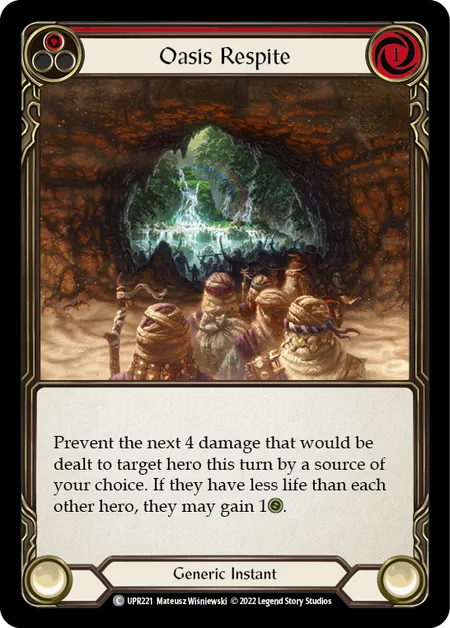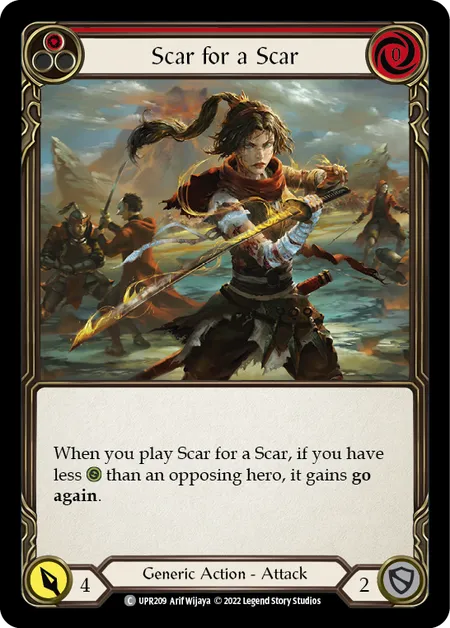We're pleased to welcome Yichin Liu as a guest writer for the upcoming release of Uprising. Yichin is a Level 1 FAB judge, one-third of the OK&Y podcast, and is known for his community involvement as MalZenith, writing articles and creating guides for new players.
The Uprising is upon us, and with it we have a brand new limited format to sink our teeth into! With a plethora of limited events to look forward to both casually and competitively in the coming months, I thought I’d briefly go over how Uprising’s draft will look like and general knowledge to find success in Uprising and beyond. While it may seem like simply picking strong cards on the surface, there are numerous ways to improve your drafting skills and consistently succeed in even the toughest and meanest of draft pods.
Making Your First Pick
When everyone sits down and starts opening their packs, the real test begins. Because Uprising is a draft with much less overlap between heroes than Tales of Aria was, it’s much easier to end up with a subpar or half-finished deck if you end up being forced to switch heroes midway through a draft because the cards for your hero just aren’t coming to you.
The most important choice to begin with is the decision to force an archetype or stay open. In other words, if you want to start committing to playing a hero right away, or if you want to remain flexible to choose later when you have more information about the rest of the table. Both have their pros and cons; if you force a hero that others around you aren’t playing, you will be rewarded and have a tight, focused deck. However, if you force a hero that is hotly contested around the table, then your deck - and everyone else playing that hero’s deck - will be much weaker and you will likely lose to players playing other heroes. On the other hand, staying open lets you decide what to play later with less risk of having a dud draft, but runs the risk of “wasting” several early game picks by virtue of not being able to run them in your final deck, potentially missing a lot of powerful cards in favor of more generally good ones.
But which cards do you actually pick to force an archetype, and which cards should you pick to stay open? Let’s start by analyzing each hero’s game plan.
Unlike the previous draftable set, Tales of Aria, the three heroes in Uprising are split between two talents: Draconic and Elemental/Ice. Our cast is composed of Fai, a Draconic Ninja; Dromai, a Draconic Illusionist; and Iyslander, and Elemental Wizard that focuses on Ice magic.
Fai is the most straightforward of the bunch, utilizing his iconic Phoenix Flames and Draconic attacks to string together long combo chains to spread out damage that’s difficult to block cleanly and activate Rupture effects. Fai drafters will need to balance picking up some number of “starter” and “payoff” cards - Draconic cards that can be played at the beginning of the combat chain to start off his long turns, and cards that can be played later in the combat chain to pick up some additional benefit. Fai also wants a decent amount of red cards - not just because they’re aggressive, but because there are quite a few cards in Draconic that care about other red cards being played in the combat chain.
Dromai is a little more tricky to play and build, owing to her Illusionist nature. Like her brother, Dromai will also want a lot of red cards, in order to pitch for ash and set up for strong late-game turns that create enough threats to force the opponent into a checkmate. While she won’t be summoning as many big dragons as she would in Classic Constructed or Blitz, the dragons here will have a much bigger impact alongside her trusty Aether Ashwings. Dromai drafters will have the task of drafting so that the opponent is forced between two tough choices - dealing with her dragons and risking an unimpeded counterattack by Dromai, or trying to rush her down before her dragons roast them to a crisp. In addition, drafters will also have to draft enough red cards to consistently generate enough ash in the early game to set up her late game plays, or risk falling before properly setting up. Having enough powerful dragons and strong phantasm attacks to be able to threaten these situations consistently will be the key to a successful Dromai draft.
Iyslander, contrary to her Draconic peers, will want blues - specifically, blue non-attack actions that she can play from her arsenal for disruptive effects during the opponent’s turn, and blues to pay for her expensive spells. Iyslander uses arcane damage, which has the nice benefit of being difficult to block without (and sometimes even with) Arcane Barrier and/or Quell equipment. While Iyslander doesn’t have to compete with other heroes for Draconic cards, the challenge in drafting her will be drafting enough Ice cards to consistently utilize her hero ability and enough blues in general to consistently frazzle opponents for 2-3 damage with Waning Moon in addition to a non-attack action. A successful Iyslander deck will whittle her opponent down with bursts of chip damage and a strong defense, threatening to take victory from the jaws of defeat as the opponent runs out of their defenses and leaves themselves wide open to a well-timed arcane blast. Be on the lookout for cards like the following when drafting Iyslander:
Generics for Every Occasion
Rounding out every deck will be a plethora of talented cards and generic cards to fill holes in the deck, but that doesn’t mean they’re not noteworthy! Many generics in this set are great at countering certain heroes, so they are great generalized pickups that can keep you open during the early stages of the draft. Generics generally fall into two categories: pivot cards and sideboard cards. Pivot cards are cards that are good in multiple decks for different reasons, allowing you to more flexibly change between two strategies during the draft if necessary. Sideboard cards are cards that are particularly useful against a specific hero. Many of the best generics in the set can function as both, and I’ll highlight a few below.
Flex is, as its name implies, incredibly flexible and can function as a way to “pop” Dromai’s phantasm cards, ending her turn and perhaps destroying one of her precious dragons alongside it. It can slot comfortably in any deck, making it a great pivot card, while also having a bit of a bonus when playing against a Dromai. Scar for a Scar is similar; while Fai and Dromai might use it more effectively, Iyslander is also perfectly happy running it as a catch-up tool to put pressure on the opponent. It was a terrific card when it first appeared in Welcome to Rathe, and I suspect it will continue to be strong in Uprising. On the defensive side, Oasis Respite is a way to stop any kind of damage - even arcane damage! While it has its uses against Fai and Dromai, it is a powerful tool against Iyslander’s biggest arcane damage hits. Every deck in the format aside from the most aggressive of Fai decks should be able to comfortably run this card.
Of course, there are only a certain number of generic cards in each pack, and if you pick up a few generics early on, eventually you’ll find yourself in a situation where you need to commit to a hero. How do you decide what to do then?
Reading and Sending Signals
In any draft format, expert players will understand the value of reading signals and sending signals - ways to wordlessly hint to other drafters that they are or are not drafting a specific strategy. To understand this, let’s look at a breakdown of an Uprising booster pack, sans tokens:
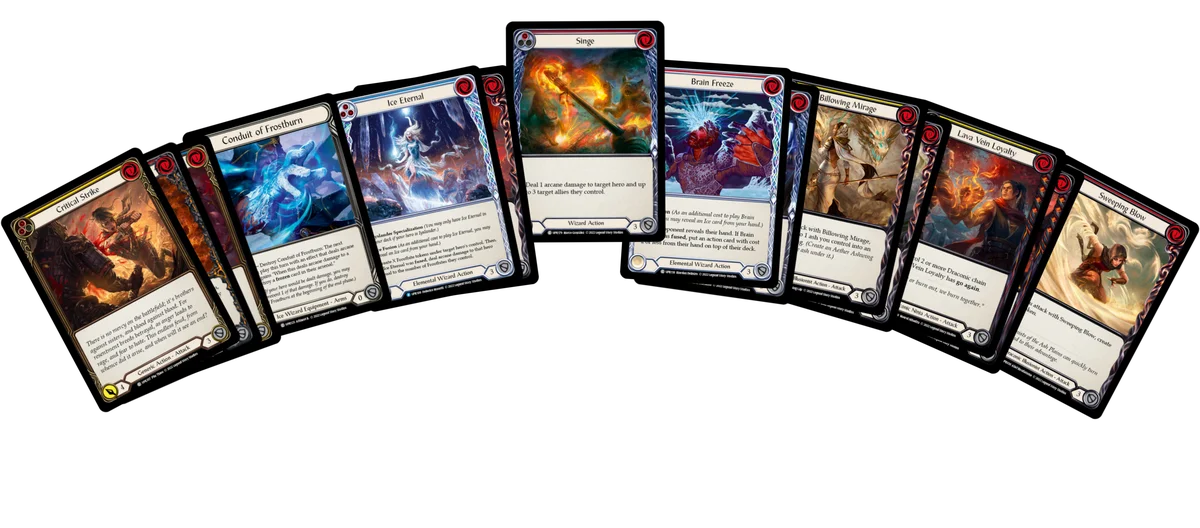
From left to right:
- 3 Common cards (Generic, Ice or Draconic)
- 1 Common Equipment
- 1 Rare card (Any)
- 1 Rare or Higher card (Any)
- 1 Foil card (Any)
- 2 Common Wizard cards
- 2 Common Ninja cards
- 2 Common Illusionist cards
- 1 Common card (Wizard, Ninja or Illusionist)
After the first few picks, you should be able to determine what has been picked. Let’s say it’s pick 4, and you notice a Heat Wave and three Ninja non-foil commons in the pack - it’s unlikely anybody ahead of you has picked up any Ninja cards, because the common slots that can contain Ninja cards cannot possibly have been taken yet. Thus, you can conclude that Fai, at least for now, is probably not a high priority hero for anybody upstream of you to play. Similarly, if you notice that there are no Wizard cards left in the pack, it’s likely that those same drafters opened something nice for Iyslander and have chosen to force playing as her for draft. By going through this thought process, you can use this knowledge to guide you on your future picks and create an awesome Fai deck! Of course, these situations are rarely as crystal clear during an actual draft, and getting a feel for what signals are being sent your way will be a skill that is honed through experience.
But what about the players downstream - the ones you’re passing cards to? How can you possibly know what they might be drafting? This is where the art of sending signals comes into play. When sending signals, look at the cards you didn’t pick, especially the ones that you can identify as high priority picks. By noting which cards of which strategies or heroes you’re sending downstream, you can get an idea of what other drafters after you are picking up, ensuring that during the next pack, when packs are passed in the opposite direction, you can pick up strong cards for your deck without too much competition.
Let’s take another example. It’s pick 1, and you’ve just done a quick look through your cards. You have a few great generics - let’s say Fyendal’s Fighting Spirit (Yellow) is one of them - and two great Dromai cards in the pack - let’s say Embermaw Cenipai (Red) and Billowing Mirage (Red). Nothing else is particularly noteworthy as far as you can tell. You still haven’t decided whether or not you want to stay open, but this gives you a great reason to do so. By picking Fyendal’s Fighting Spirit, you send a clear signal to the drafters downstream that Dromai is available to play. It’s more than likely that those drafters will take you up on your graciousness and pick up those cards, biasing them towards playing Dromai. On the other hand, you have picked up a flexible generic card that is good in many decks, especially because it is one of the few cards in the set that can destroy a phantasm attack, since it has 6 power - a card that can ruin the day of the Dromai players you just sent cards to!
“Draft a Deck, Not a Pile”
One of the most common mantras of experienced drafters is to “draft a deck, not a pile”. What they mean by that is that a deck of “goodstuff” - a general pile of cards that are good in a specific hero - will always be weaker than a deck that is focused and has a gameplan, with proper ratios of cards to balance them out. Earlier in the article, I mentioned what each hero must balance when drafting. Use this knowledge and match them with cards that you draft. Do you have plenty of cards that get bonuses at certain chain link lengths in Fai? Rather than continuing to draft every good Fai card that comes your way, you may want to prioritize weaker go again attacks that can start off a combat chain, to ensure that you are able to reach those payoffs. Have plenty of powerful Dragons and Ashwing generators in Dromai? It may be time to find a few defensive cards to help you get to the point where you can play them out in one go.
A great heuristic to use while drafting is the 8/15/22 model - in other words, you want to draft 8 cards of a role that you want to see one of per hand, 15 cards of a role that you want to see two of per hand, and 22 cards of a role that you want to see three of per hand. Use this to check how many cards of each pitch you want to be drafting. As Iyslander, for example, you should be aiming for at least 2 blue cards per hand - one to pitch and one to arsenal. Therefore, aim to draft at least 15 blue cards for your deck during draft. As Dromai and Fai, you’ll need significantly less - probably only about one blue card per hand. Therefore, aim to draft 8 blue cards for your deck. This can help you easily calculate at a glance what you need to be prioritizing to complete your deck.
In a competitive level draft, you won’t be able to look at the cards you’ve drafted until the end of drafting each pack, so being able to keep track of what cards you’ve drafted and what cards you’re missing to complete your deck is a vital skill to practice and master.
As is the case with most Flesh and Blood metagames, the draft metagame can and will also evolve as experience with the set matures, changing what might be the best first picks and how decks are shaped. I hope that the knowledge contained within this article can be of use to you and wish you all the best of luck in your Uprising drafts!
Yichin Liu is a competitive Flesh and Blood player and author of content relating to gameplay and strategy. The opinions expressed in the above article are his own and do not necessarily reflect the views of Legend Story Studios.
